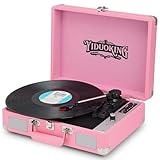David Crosby Vinyl Records Lps For Sale
Check out these new and used David Crosby vinyl records LPs for sale. We recommend starting your David Crosby vinyl collection with the essential albums Music Is Love, The Byrds and Graham Nash David Crosby. Our inventory is always changing, so check back often, or browse our list of vinyl records for sale from rock musicians.
Auto Amazon Links: No products found.

David Crosby: The Enduring Harmony of a Musical Maverick
Early Days and The Byrds (1964-1967)
Formation of The Byrds David Crosby’s journey in the world of music began with the formation of The Byrds in 1964. Crosby, alongside Roger McGuinn, Gene Clark, Chris Hillman, and Michael Clarke, created a fusion of folk and rock that would become synonymous with the 1960s California sound.
“Mr. Tambourine Man” (1965) The Byrds’ debut album, “Mr. Tambourine Man” (1965), marked the beginning of Crosby’s discography. The title track, a Bob Dylan cover, became an anthem for the emerging folk-rock movement. Crosby’s vocal harmonies and 12-string Rickenbacker guitar playing added a distinctive layer to the band’s sound.
“Turn! Turn! Turn!” (1965) The Byrds’ second album, “Turn! Turn! Turn!” (1965), further solidified their folk-rock credentials. Crosby’s contributions to tracks like “What’s Happening?!?!” showcased his growing role as a songwriter within the band.
“Fifth Dimension” (1966) “Fifth Dimension” (1966) marked a departure into more experimental territory for The Byrds. Crosby’s influence was evident in the psychedelic and jazz-influenced tracks, reflecting his willingness to explore new musical avenues.
Crosby, Stills & Nash (1968-1970)
Formation of CSN Crosby’s journey took a pivotal turn when he joined forces with Stephen Stills and Graham Nash to form Crosby, Stills & Nash (CSN) in 1968. Their eponymous debut album, released in 1969, showcased the trio’s seamless vocal harmonies and marked the beginning of a new chapter in Crosby’s career.
“Crosby, Stills & Nash” (1969) The debut album, “Crosby, Stills & Nash” (1969), featured timeless tracks like “Suite: Judy Blue Eyes” and “Wooden Ships.” Crosby’s distinctive voice and songwriting contributed to the album’s critical and commercial success.
“Déjà Vu” (1970) “Déjà Vu” (1970) saw the inclusion of Neil Young, completing the CSNY lineup. Crosby’s compositions, including “Almost Cut My Hair” and “Guinnevere,” showcased a maturing songwriter who could navigate complex themes with poetic lyricism.
Solo Explorations and “If I Could Only Remember My Name” (1971)
Solo Debut Embracing his desire for greater artistic freedom, Crosby released his debut solo album, “If I Could Only Remember My Name” (1971). The album featured an array of guest musicians, including members of CSNY, Grateful Dead, and Jefferson Airplane. The ethereal and introspective nature of the album highlighted Crosby’s unique musical vision.
Crosby, Stills, Nash & Young Reunion and “CSN” (1977)
Reunion Album After a hiatus, CSNY reunited for the album “CSN” (1977). The album reaffirmed the enduring chemistry of the group, with Crosby’s “Just a Song Before I Go” becoming one of its standout tracks.
“Oh Yes I Can” (1989) and Personal Triumphs
Personal Struggles and Resilience The late 1980s saw Crosby facing personal struggles, including legal issues and substance abuse. However, he emerged from this challenging period with a newfound sense of resilience and creativity.
“Oh Yes I Can” (1989) Crosby’s second solo album, “Oh Yes I Can” (1989), reflected his journey of self-discovery and recovery. The album’s title track and “Tracks in the Dust” showcased Crosby’s ability to channel personal experiences into poignant and introspective songwriting.
CSNY Reunion and “American Dream” (1988)
Reunion with CSNY The late 1980s also witnessed a reunion with CSNY for the album “American Dream” (1988). Crosby’s contributions, including the title track and “Nighttime for the Generals,” added depth to the album’s exploration of contemporary issues.
Crosby, Stills & Nash’s Continued Journey (1990s-2000s)
“Live It Up” (1990) The 1990s brought the release of Crosby, Stills & Nash’s studio album “Live It Up” (1990). While not a commercial blockbuster, the album showcased Crosby’s enduring harmonies and the group’s commitment to their musical legacy.
“After the Storm” (1994) “After the Storm” (1994) marked another studio effort by Crosby, Stills & Nash. Crosby’s songwriting contributions, such as “Camera” and “Till It Shines on You,” highlighted the continued evolution of the group’s sound.
Individual and Collective Recognition
Rock and Roll Hall of Fame Induction (1991) In 1991, Crosby, Stills & Nash were inducted into the Rock and Roll Hall of Fame, recognizing their significant contributions to the world of rock music.
Crosby’s Solo Work in the 2000s Crosby’s solo career saw a resurgence in the 2000s with albums like “It’s All Coming Back to Me Now” (1995) and “Croz” (2014). These albums showcased Crosby’s ability to remain relevant while staying true to his artistic vision.
“Sky Trails” (2017) and Collaborative Ventures
“Sky Trails” (2017) “Sky Trails” (2017) marked another chapter in Crosby’s solo career. The album featured a mix of original compositions and covers, showcasing Crosby’s timeless voice and his knack for reinterpreting classic songs.
Lighthouse Band and Collective Collaborations Crosby’s collaborative ventures extended to the Lighthouse Band, a group that included Michael League of Snarky Puppy. Their live performances captured the spirit of Crosby’s enduring musical journey.
Legacy and Ongoing Influence
Harmonies and Songwriting Legacy David Crosby’s legacy is intricately woven into the tapestry of folk-rock and rock music. His contributions to The Byrds, Crosby, Stills & Nash, and his solo career have left an indelible mark on the genre, influencing subsequent generations of musicians.
Personal Growth and Resilience Crosby’s personal struggles and subsequent triumphs are a testament to his resilience and ability to channel life’s experiences into his art. His openness about his journey has resonated with fans, adding a layer of authenticity to his legacy.
Activism and Social Engagement Beyond his musical contributions, Crosby has been an advocate for various social and environmental causes. His activism aligns with the spirit of the 1960s counterculture, reflecting a commitment to positive change.
Discography Overview
1. “If I Could Only Remember My Name” (1971)
- Solo debut exploring ethereal and introspective themes.
2. “Oh Yes I Can” (1989)
- Reflection on personal struggles and triumphs.
3. “Sky Trails” (2017)
- Later solo work showcasing Crosby’s timeless voice.
4. “Crosby, Stills & Nash” (1969)
- Debut album with timeless tracks and harmonies.
5. “Déjà Vu” (1970)
- CSNY collaboration exploring complex themes.
6. “CSN” (1977)
- Reunion album reaffirming the group’s chemistry.
7. “American Dream” (1988)
- CSNY reunion addressing contemporary issues.
8. “Live It Up” (1990)
- Studio effort by Crosby, Stills & Nash in the 1990s.
9. “After the Storm” (1994)
- Another studio album by Crosby, Stills & Nash.
10. “Croz” (2014) – Solo album in the 2000s showcasing Crosby’s relevance.
Conclusion
David Crosby’s musical journey spans decades, marked by artistic evolution, personal triumphs, and a commitment to authenticity. From the folk-rock harmonies of The Byrds to the enduring legacy of Crosby, Stills & Nash, and his solo explorations, Crosby’s influence on the landscape of rock and folk music is immeasurable. His ability to channel personal experiences into timeless music has left an indelible mark on the hearts of listeners, solidifying his place as a maverick in the world of music.

![The Life of a Showgirl[Sweat & Vanilla Perfume Orange Glitter Vinyl] #1](https://m.media-amazon.com/images/I/51SJhJbv35L._SL100_.jpg)
![The Life of a Showgirl[Sweat & Vanilla Perfume Orange Glitter Vinyl] #2](https://m.media-amazon.com/images/I/5198D2rwyNL._SL100_.jpg)


![Merry Christmas II You [15th Anniversary Shiny Starlight LP] [Amazon Exclusive] #1](https://m.media-amazon.com/images/I/51MOyCwkOzL._SL100_.jpg)

![Currents [2 LP] #1](https://m.media-amazon.com/images/I/61zjlISscDL._SL100_.jpg)
![Currents [2 LP] #2](https://m.media-amazon.com/images/I/51ETyCkBSyL._SL100_.jpg)













![[Exquisite Appearance] Built from wood and metal materials with a unique sense of layering; The streamlined corner design is truly atmospheric and stylish(Note: long hold the start button to turn the power on, and press again to start) [All in 1] Thi...](https://m.media-amazon.com/images/I/41vovGjFkeL._SL160_.jpg)





































